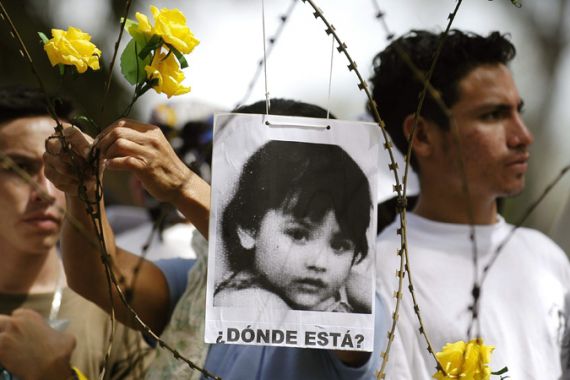
El Salvador’s open wound
El Salvador’s bitter civil war ended 20 years ago, but the legacy of the conflict is still felt across the country.
From 1980 to 1992, El Salvador was devastated by a bitter 12-year civil war in which around 75,000 people were killed and more than 7,000 went missing.
|
“The revolution when it broke out in 1980-1981 was a homegrown, authentic revolution. It would have been over very quickly and the revolutionary forces would have won had we [the US] not intervened. We intervened and targeted [with] modern, sophisticated weapons of war, aerial bombardment; all that against a population that was armed really only with rifles.“ – Robert White, the former US ambassador to El Salvador |
The conflict pitted the forces of the military government against leftist guerillas known as the Farabundo Marti National Liberation Front (FMLN).
Concerned about the expansion of communism in Central America, the US gave billions of dollars in military and economic aid to the then government of El Salvador. Ronald Reagan, the US president from 1981 to 1989, viewed the country’s military government as a bulwark against a communist takeover.
The civil war was brutal and there were reports that civilians were indiscriminately killed in the countryside. In one village, El Mozote, around 1,000 people were killed by Salvadoran armed forces. Many were women and children and some of the children were just a few days old.
The war came to an end in 1992 with the signing of the Peace Accords. The agreement, sponsored by the United Nations (UN), dictated that the FMLN surrender their weapons to UN forces and that 102 Salvadoran officers be dismissed. The FMLN was allowed to become a political party.
|
“I think it was a civil war …. You also had outside support coming in from Nicaragua, from the Cubans. It was not an entirely homegrown conflict, it was a mixture of both clearly in response to the socio-economic challenges … but it was also an effort on the part of the left to establish a fairly consolidated – Ray Walser, a senior policy analyst at the Heritage Foundation |
Today, violence continues to be a defining feature of life in El Salvador with street gangs clashing violently for control of territory – leaving death and destruction in their wake.
On this episode of Inside Story Americas we ask: What is the legacy of civil war in El Salvador? And what did Washington gain from funding the government forces?
To discuss this we are joined by: Robert White, a senior fellow at the Center for International Policy who served as US ambassador to El Salvador under President Carter and during the first few months of Ronald Reagan’s administration until he was recalled after criticising US policy in the country; Francisco Altschul, the current Salvadoran ambassador to the US; and Ray Walser, a senior policy analyst at the Heritage Foundation, a think tank that formulates and promotes conservative public policies.
Sonia Umanzor, a survivor of the civil war who now lives near Washington DC, recalls her experience:
“I left my country in 1981 after I faced persecution. I am one of the survivors. I was a nurse working for the communities under attack. All the people who helped the poor people, they were considered against the government. Only two per cent of the population of the Salvadoran refugees were granted asylum [by the US] because the United States was supporting the war.”
|
US aid to El Salvador
Current situation in El Salvador
|
Watch: Life in San Salvador
Witness examines gang violence in the Salvadoran capital, San Salvador, and follows Father Antonio, a priest who works with gang members and the victims of their violence.
In pictures: The Gangs of San Salvador